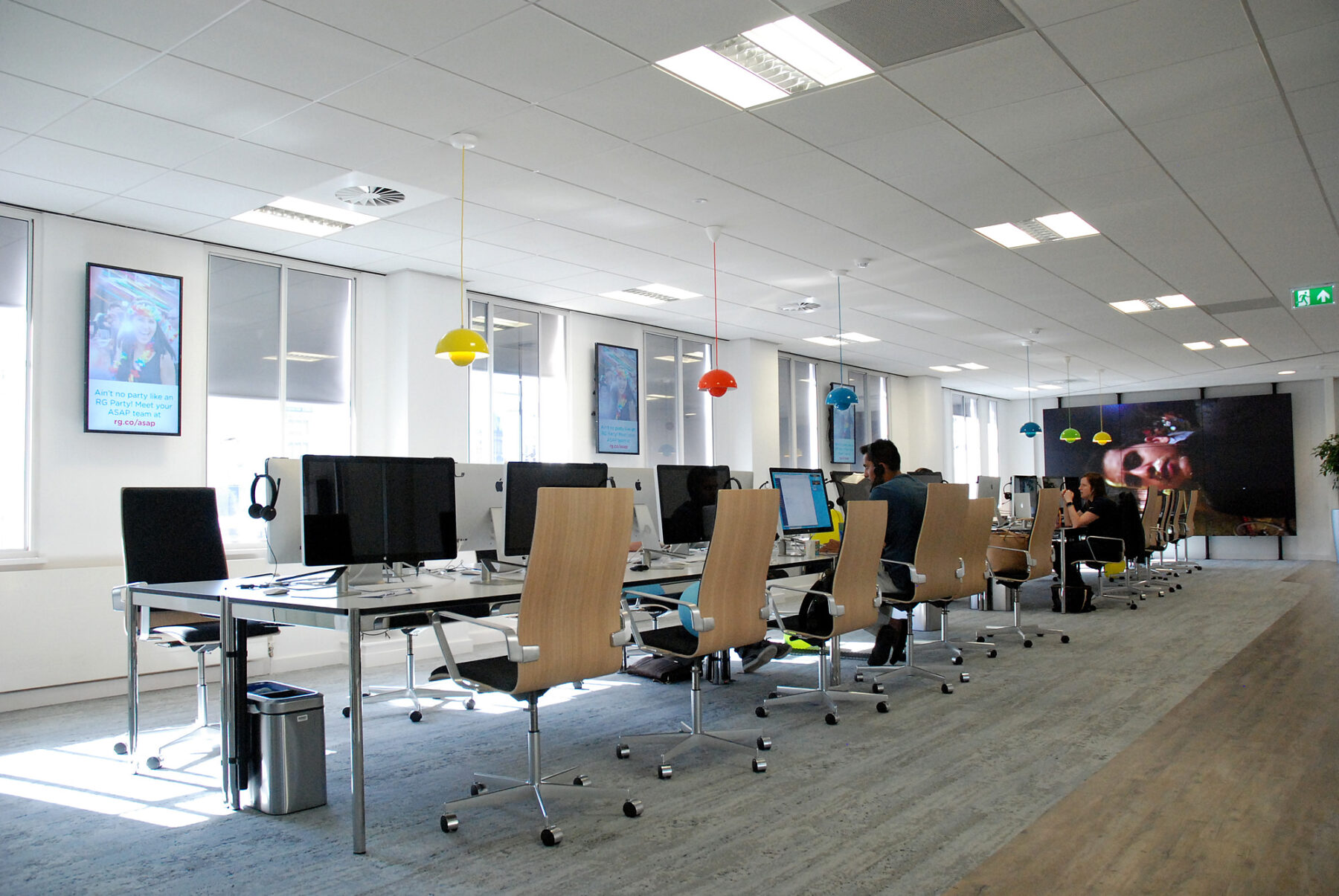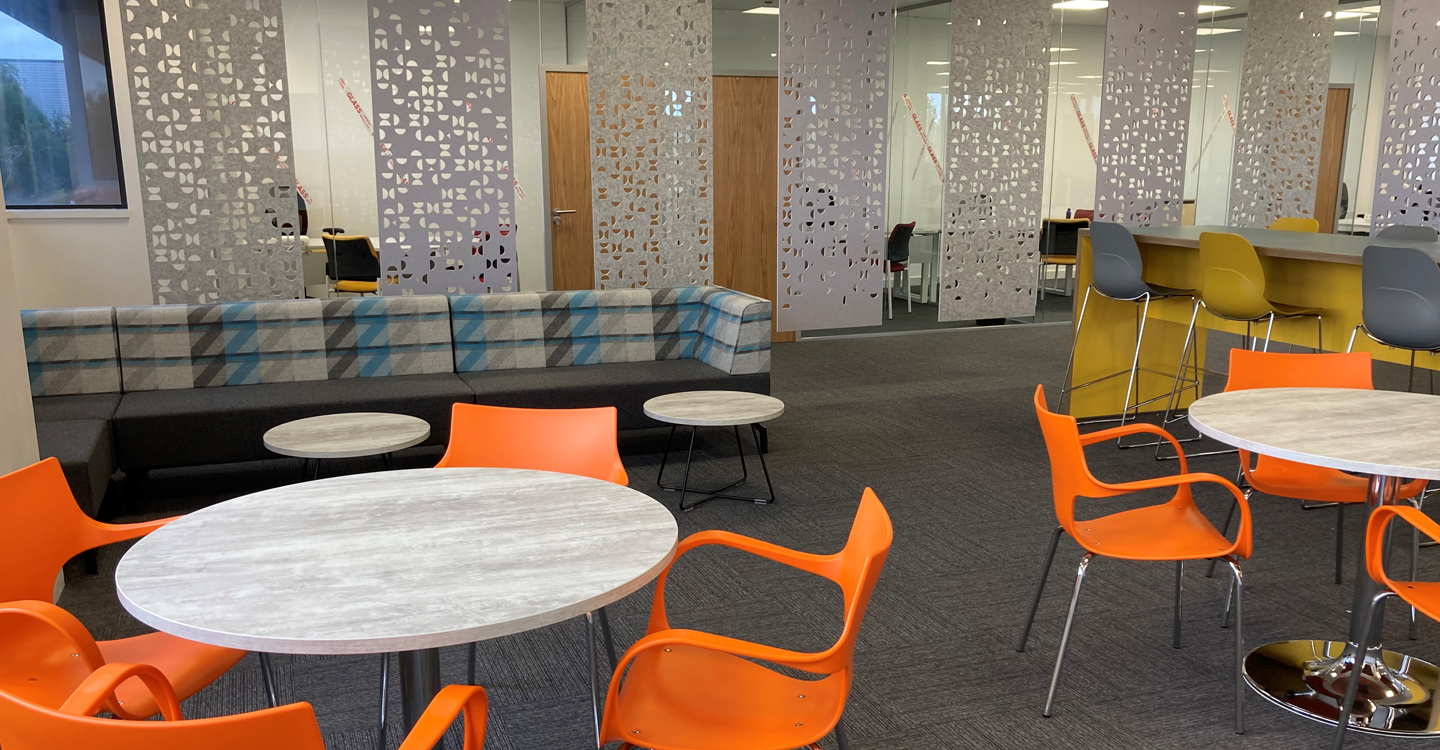Open-plan offices have become a hallmark of modern workplace design, praised for promoting collaboration, flexibility, and efficient space use.
However, they are not without challenges — chief among them being noise.
Poor acoustics can lead to decreased concentration, increased stress levels, and reduced productivity.
Fortunately, with the right strategies, it’s entirely possible to manage sound effectively without compromising on aesthetics or functionality.
Here’s how businesses can control acoustics and create a more balanced and comfortable open-plan working environment.
1. Acoustic Zoning
One of the most effective ways to manage noise in open-plan offices is by dividing the space into acoustic zones.
This involves designing different areas for specific activities — such as quiet work, collaborative meetings, phone calls, and socialising.
By physically separating noisy functions from quiet zones using layout design, furnishings, or partitions, you help reduce the spread of sound across the entire office.
2. Sound-Absorbing Materials
Hard surfaces like glass, concrete, and wood — common in modern interiors — tend to reflect sound, contributing to echo and overall noise levels. Introducing soft, absorbent materials into the space helps dampen these effects.
Key elements to consider include:
Acoustic ceiling panels: Suspended tiles or baffles absorb sound waves and reduce reverberation.
Wall panels or fabric-wrapped boards: These can be decorative as well as functional.
Carpet tiles or rugs: Especially useful in high-traffic areas to absorb footsteps and chair movement.
Upholstered furniture: Sofas, chairs and booths with soft finishes help absorb background noise.
3. Acoustic Desk Screens and Booths
Open desks can easily become noise amplifiers, particularly during phone calls or video meetings.
Installing acoustic desk screens between workstations can provide a degree of privacy while limiting sound travel.
Phone booths or acoustic pods are also a worthwhile investment, offering enclosed spaces for calls or focused work without disturbing others.
4. Strategic Furniture Placement
The layout of furniture can have a substantial impact on how sound behaves in a space.
Grouping desks back-to-back, placing storage units or bookcases between teams, and using high-backed seating can all help interrupt the path of sound waves.
Creating buffer zones — such as placing lounge seating, plants, or filing cabinets between desks and communal areas — can also help reduce the transmission of noise.
5. Sound Masking Systems
Sound masking involves introducing a consistent, low-level background noise — often a white or pink noise — designed to cover up distracting sounds like conversations or typing.
While it may seem counterintuitive, the right masking system can reduce perceived noise levels and make speech less intelligible, which enhances privacy.
These systems are particularly useful in larger offices or spaces with significant reverberation.
6. Behavioural Guidelines and Culture
Technology and design can only go so far. Establishing a workplace culture that respects acoustic comfort is equally important. This could include:
Encouraging staff to take calls in designated areas
Using headphones for video calls or focused work
Limiting loud conversations in open areas
Offering remote or hybrid work options to reduce occupancy and noise levels
Clear communication and signage can support these behaviours without being intrusive.
7. Plants as Natural Acoustic Buffers
In addition to their wellbeing benefits, indoor plants can help reduce ambient noise by absorbing and diffusing sound.
Placing large potted plants or vertical green walls in strategic locations can enhance both the aesthetics and acoustic performance of the office.
Effective acoustic management in open-plan offices doesn’t mean reverting to cubicles or shutting down collaboration.
It means creating a space that supports diverse work styles, from quiet focus to creative discussion, with thoughtful design and policies.
By integrating a mix of physical solutions, smart layout choices, and respectful workplace culture, businesses can transform a noisy open-plan office into a harmonious, productive environment where people feel both energised and at ease.




